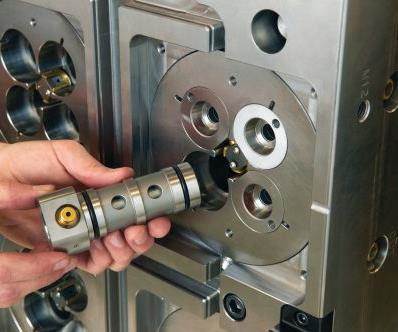In the Trenches: Think Like a Toolmaker
Fundamental knowledge and understanding is necessary in mold repair.
It is said that a defining indicator of your age is when you refuse to keep up with technology. So when I struggle with technology, I either try to mask it or make light of it while I seek the aid of my younger counterparts. That doesn’t mean I am dismissing technology, I just believe that, however dazzling a new technology may seem, it is almost always an enhancement, improvement or adaptation of the previous technological development. It’s the fundamentals that matter.
New technology allows us to keep up with demand and be competitive. I have no argument with these benefits, but technology can also sometimes become a crutch. For example, a certain IT manager (of my generation) said that none of the young professionals she hires has any idea how to program in binary code. They all have degrees and credentials, but they do not possess the basic fundamentals upon which computing is based.
Machinists who rely on technology can produce amazingly accurate work in remarkable time, and I’m not denigrating them one bit. If that is the scope of their work then the understanding of technology may be all they ever need to know. However, in the realm of mold repair, much depends upon reverse engineering, so an understanding of fundamental concepts is critical.
For example, the ability to indicate your way into an arced wall of an unknown radius with draft is contingent upon understanding how a radius generates from a point, which handle changes the location of that point and which handle changes the size of the radius swung from it. Additionally, when you do start to sneak up on the cut and realize it’s not quite right, an understanding of what is occurring is necessary in order to decide if the location or size needs adjustment.
You may be asking yourself what difference it makes. We have the technology to both design and manufacture any shape we can conceive, so who cares if we know all that? As I’ve intimated, in the world of mold repair, it is important to be able to put things back in order, back the way they were made, and oftentimes this is without the benefit of the latest and greatest CNC equipment.
Many who work in mold repair do so in minimally equipped shops. The old line “We’ve done so much with so little for so long, we’re qualified to do almost anything with practically nothing” seems more true than humorous sometimes. The equalizer for “practically nothing” is brainpower, a firm grasp of the fundamentals of geometry, tested and proven machining skills, and an understanding of the full capabilities of the meager equipment one can access.
How many younger machinists have ever stopped to consider that a CNC machine cannot move or cut in a curved or circular path? There is no fixed point around which the spindle swings so that it can cut a curve. All it can do is make microscopic X and Y moves that approximate a curve. The same can be done on a manual mill. Not with the same fluidity or resolution, but the principle is exactly the same. Who thinks like that? A toolmaker.
Related Content
5 Hot Runner Tips for Moldmakers and Molders
Best practices for initial hot runner tryouts and effective preventive maintenance.
Read MoreProducts and Services for Multiple Moldmaking Needs
New year, new technology roundup! Featured here is a collection of product offerings, from profile milling cutters to industry-specific CAD/CAM software to innovative hot work tool steels.
Read MoreHands-on Workshop Teaches Mold Maintenance Process
Intensive workshop teaches the process of mold maintenance to help put an end to the firefighting culture of many toolrooms.
Read MoreQuestions and Considerations Before Sending Your Mold Out for Service
Communication is essential for proper polishing, hot runner manifold cleaning, mold repair, laser engraving and laser welding services.
Read MoreRead Next
In the Trenches: Mold Repair
In this multi-part series of articles, contributer James Bourne, a tool repair supervisor and freelance writer, shares his own personal struggles in the business, as well as lessons learned and tricks of the trade garnered along the way.
Read MoreHow to Use Continuing Education to Remain Competitive in Moldmaking
Continued training helps moldmakers make tooling decisions and properly use the latest cutting tool to efficiently machine high-quality molds.
Read MoreReasons to Use Fiber Lasers for Mold Cleaning
Fiber lasers offer a simplicity, speed, control and portability, minimizing mold cleaning risks.
Read More_970x90 3.png;maxWidth=970;quality=90)











.jpg;maxWidth=300;quality=90)




.png;maxWidth=300;quality=90)








_970x250 4.png;maxWidth=970;quality=90)